Spray guns for painting ceilings and walls

A spray gun is a tool designed to apply pigment, primer, varnish, enamel and other compounds on horizontal and vertical surfaces. Sprayers are sold in a wide range - there are various types of models on the market for domestic and professional use. Consider the types of spray guns, their pros and cons, selection rules and subtleties of operation.
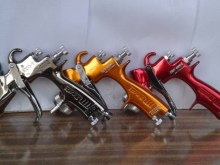
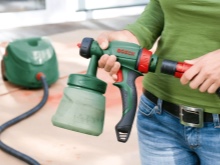
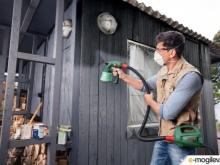
Peculiarities
A brush or roller is often used to paint walls and ceilings in an apartment. The use of these tools is justified if you need to process a small area. However, when planning large-scale work, it is recommended to purchase a special paint sprayer. It is much better than a brush and paint roller for several reasons:
-
allows you to apply coloring pigment and other compounds in a thin and even layer;
-
promotes economical consumption (reduces the volume of used material by up to 40% compared to a roller);
-
eliminates the formation of streaks and the appearance of bristles from the brush, which significantly improves the quality of repair work;
-
contributes to a significant increase in labor productivity.

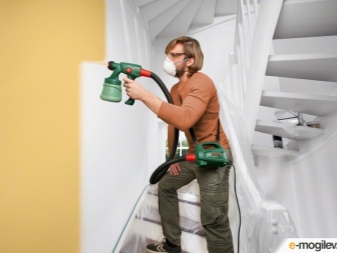
The spray gun is easy to use, thanks to which even a beginner will understand the intricacies of its operation. Manufacturers attach detailed instructions with the device, which describe the rules for using the equipment - if you have any questions, you can find detailed information in them.
The disadvantages of spray guns include their high cost compared to a roller. However, their price is compensated by the high speed of the work performed, which leads to the rapid completion of painting activities. By using a spray gun, you can save not only time spent on repairs, but also energy.
Another disadvantage typical for spray guns is the release of particles of the sprayed material into the environment.
To prevent them from getting into the eyes and respiratory organs, it is recommended to use special respirators and goggles during work.
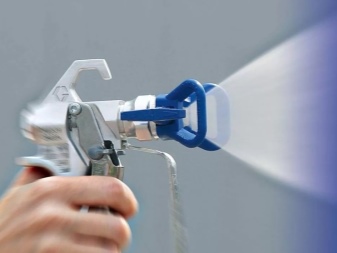
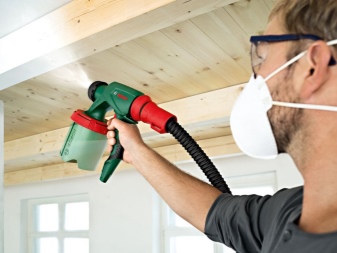
Varieties
Household mechanical models of paint sprayers have a similar device. Visually, the simplest devices resemble a pistol with a lever, equipped with a handle and a tank for the sprayed material. The container for the pigment, depending on the design, is located at the top, bottom or side of the spray gun. Spray guns are also classified by drive type.
Manual
These are the simplest in design and budget models. They are used to apply water-based compositions, lime and chalk solutions. The design of the mechanical models includes a solution container and outlet tubes. Such devices are intended for small painting works, whitewashing of garden and street trees.
The advantages of manual models:
-
financial availability;
-
reliability due to the simplicity of the design;
-
pressure build-up without additional resource costs.
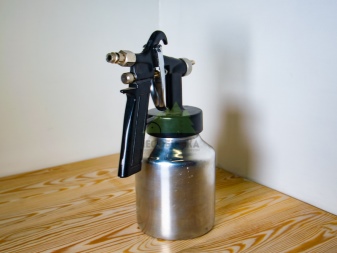
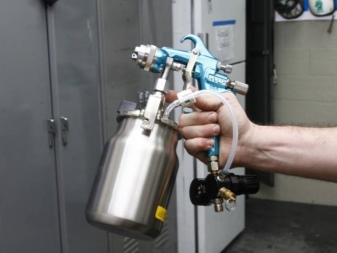
Mechanical spray guns have a number of significant disadvantages. The main disadvantages include low productivity, the inability to provide constant pressure, uneven coloring when the lever is pressed unevenly.
A hand-held paint sprayer gives the lowest color quality in comparison with other types. However, if it is necessary to process small areas, it is best to give preference to just such models - this is the best alternative to a brush or roller.
Hand-held spray guns include the Zitrek CO-20 device. The device weighs 6.8 kg and the tank capacity is 2.5 liters. Maximum productivity - 1.4 l / min. Designed to work with compounds, the density of which does not exceed 1.3 * 10³ kg / m³.
The spray gun has a metal body, due to which it is resistant to various types of mechanical stress.
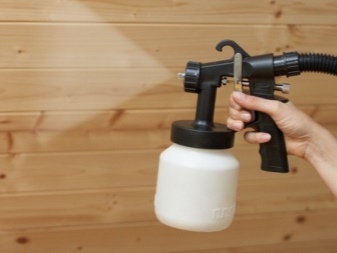
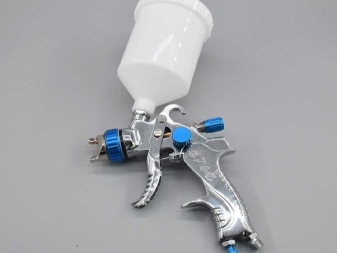
Electrical
Electric spray guns are in demand among DIYers due to their compact size, low weight and mid-price range. Equipment spraying paint is produced by pressure generated by a built-in pump. Since there is no directional air flow for such spray guns, their painting quality is inferior to pneumatic spray guns. However, such a tool can be a reliable assistant for home painters.
Advantages of electric spray guns:
-
ease of management;
-
the ability to perform work at different angles due to the elastic intake tube;
-
good performance;
-
low power consumption.

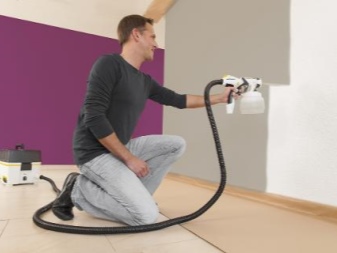
The disadvantages of such equipment include the dependence on the 220 V electrical network and the limited range of the wire length.
The disadvantages of users also include the need for preventive measures to increase the durability of the device.
The top of the most popular electrically driven stainers includes the Elitech KE 350P model. It occupies the first line in the rating of network paint sprayers. This is a pneumatic type HVLP (low pressure and high volume) equipment with a power rating of 350 watts. Thanks to the provided adjustments, it is possible to adjust the intensity of the supply of the coloring material. The device is designed to work with compounds whose viscosity does not exceed 60 DIN. The model is equipped with a 700 ml plastic container.
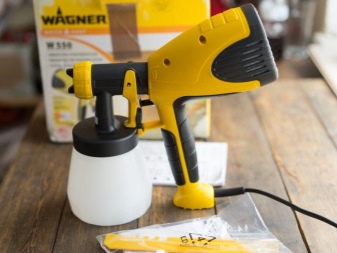
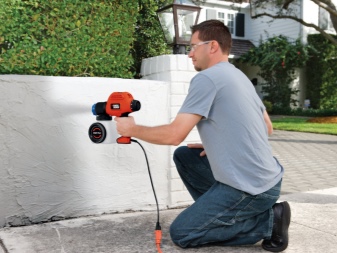
Pneumatic
Such spray guns are classified as professional. Devices are considered versatile, since they can be used to apply various compositions to surfaces. For example, they allow varnishing wooden products, painting walls with water-based paint, treating them with putty, primer and other means. Pneumatic paint sprayers are designed to perform a large amount of work - their productivity can reach about 400 m2 in 1 hour.
Other benefits of pneumatic equipment include:
-
ensuring constant pressure, due to which the applied composition lies on the surface in an even layer;
-
the ability to regulate operating parameters;
-
the speed of repair work.
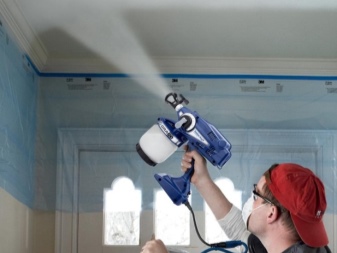

Spraying paint on pneumatic devices is carried out using compressed air. The required pressure in the system is pumped by a compressor - it must be purchased separately, which leads to additional financial costs. Significant disadvantages also include the presence of hoses that reduce the mobility of the equipment, and the high noise level of the operating compressor.
Among professional painters, the popular spray gun is the Stels AG 950 LVLP model. Reliable and high-performance equipment is designed for the application of finishing decorative coatings on various surfaces. The weight of the device is 1 kg, the capacity is 600 ml, the working pressure is 2 atm.
The metal body of the device makes it resistant to mechanical stress, and the polished chrome coating reliably protects the spray gun from corrosion and premature wear.
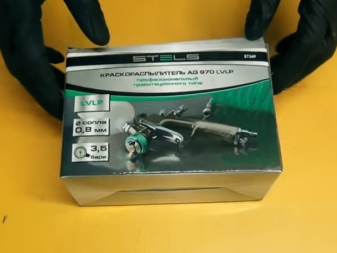
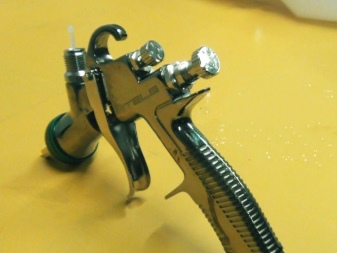
Rechargeable
Spray guns are considered mobile if they have a power source in their design. Thanks to the rechargeable battery, the device is characterized by mobility - this is its main advantage. It does not depend on the electrical network, due to which it can be operated in the field.
The disadvantages of battery models include a limited time of continuous operation (no more than half an hour for most devices on the market) and a higher price compared to network atomizers. Besides because of the built-in battery, the devices are heavy, which complicates their operation.
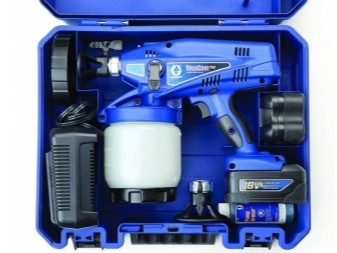

Selection Tips
In order not to be disappointed in the purchase, you need to pay attention to several important parameters when choosing a paint sprayer.
-
Tank material. The most reliable models are equipped with an aluminum container with an anti-corrosion coating. In terms of strength, plastic tanks are much inferior to metal ones.
-
Location of the pigment reservoir. Most models have it at the top or bottom. For painting the ceiling, it is best to choose an apparatus with a side or bottom arrangement of the container, for walls - with an upper one.
-
Nozzle diameter. Optimum sizes range from 1.3 to 1.5 mm. It is convenient to work with tools with such nozzle diameters with most types of paints, while obtaining a high-quality uniform coating.
-
Device performance. The speed of work directly depends on this indicator. The productivity shows the volume of solution sprayed in 1 minute. For household needs, it is recommended to take a paint sprayer with a flow rate of at least 0.8 l / min.

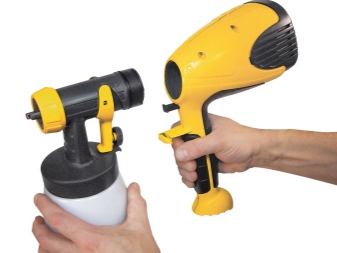
When choosing a spray bottle, it is important to pay attention to its weight. When using too heavy apparatus, the master will quickly get tired and waste time on rest. The most convenient devices in operation are those whose weight does not exceed 2 kilograms.
How to paint correctly?
The quality of the staining depends on many factors. First of all, it is influenced by the level of surface preparation and the correct application of the pigment.
Preparation
The work includes removing old cladding materials, dismantling the putty if necessary. If the previous layer holds firmly, you can leave it. Any unevenness on the ceiling and wall surfaces must be repaired. For this purpose, putty is used. The solution is applied with a spatula. If you need to apply several layers, it is important to wait until the previous one is completely dry - this will take about 24 hours.
Before using the spray gun, make sure that the surfaces are perfectly flat. If roughness, protrusions and other defects are found, they should be rubbed with sandpaper.
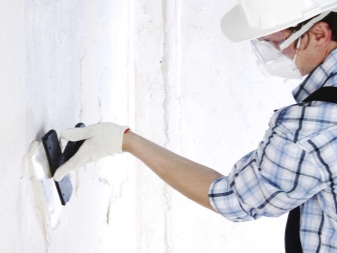
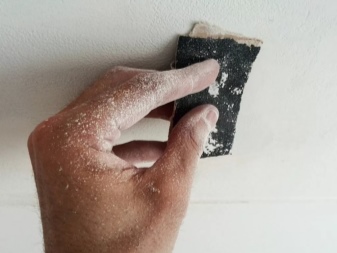
It is recommended to prime prepared dried surfaces to increase the adhesion of the pigment to the base. Primers can be applied with a brush, roller or spray.
Before painting, you need to properly dilute the "water emulsion". Usually, to obtain a specific color, craftsmen mix white paint with a color scheme of the desired shade.
When diluting, it is recommended to observe the selected proportions, otherwise the color may turn out to be uneven.
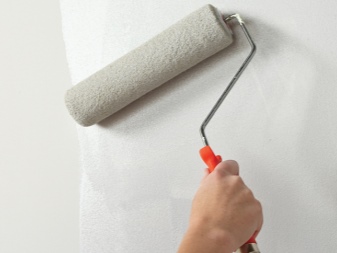
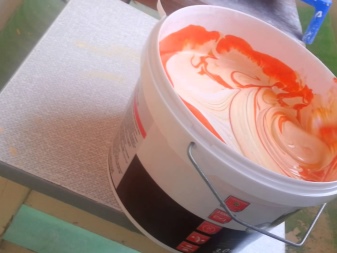
Painting ceilings
After preparing the surface, pigment and spray gun, you can start painting work. Before painting, it is recommended to check the spray gun by making a few preliminary "splashes" on cardboard or thick paper. When applying the composition, there should be no smudges and splashes. Adjust the torch width if necessary.
When applying paint to the ceiling, hold the spray gun perpendicular to the base at a distance of 30 to 50 cm. To ensure an even coverage, it is recommended to make smooth movements with the tool.
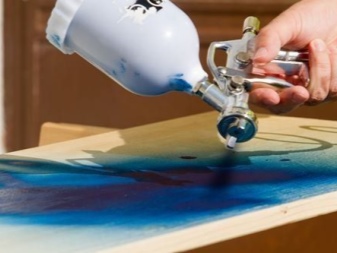
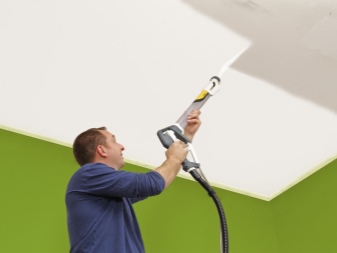
The approximate speed of the nozzle should be no more than 1 m in 5 s. Do not keep the spray funnel in one place - this will lead to a thickening of the layer, obtaining a more intense shade.
Professional painters recommend painting surfaces in 3 layers. They need to be applied alternately, waiting for each to dry completely.
If you re-paint the wet layer, the pigment may lie unevenly and soon flake off. In this case, the work will have to be repeated from the beginning.
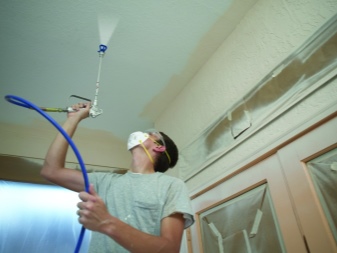
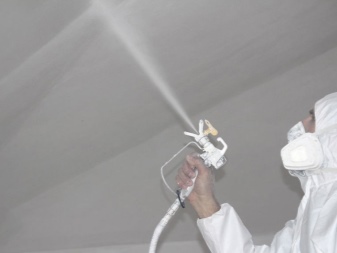
Painting the walls
Painting wall surfaces is similar to painting ceilings. Before work, the old cladding is also removed, plastering, leveling, grinding, priming is carried out. Coloring should start from the far corners and move towards the front door. The torch should move from the ceiling to the floor.
It is recommended to apply at least 3 layers of pigment (the amount directly depends on the viscosity of the coloring composition). Coating with each new layer must be done across the previous one. If the first one was overlaid vertically, the second color will be vertical.
After using the equipment, it should be thoroughly rinsed and dried, and then stored in a dry place.
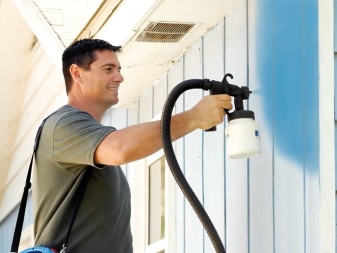
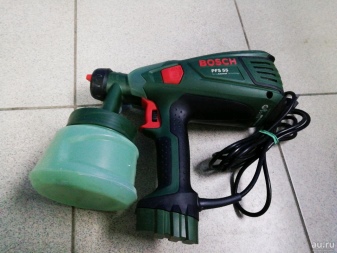













The comment was sent successfully.